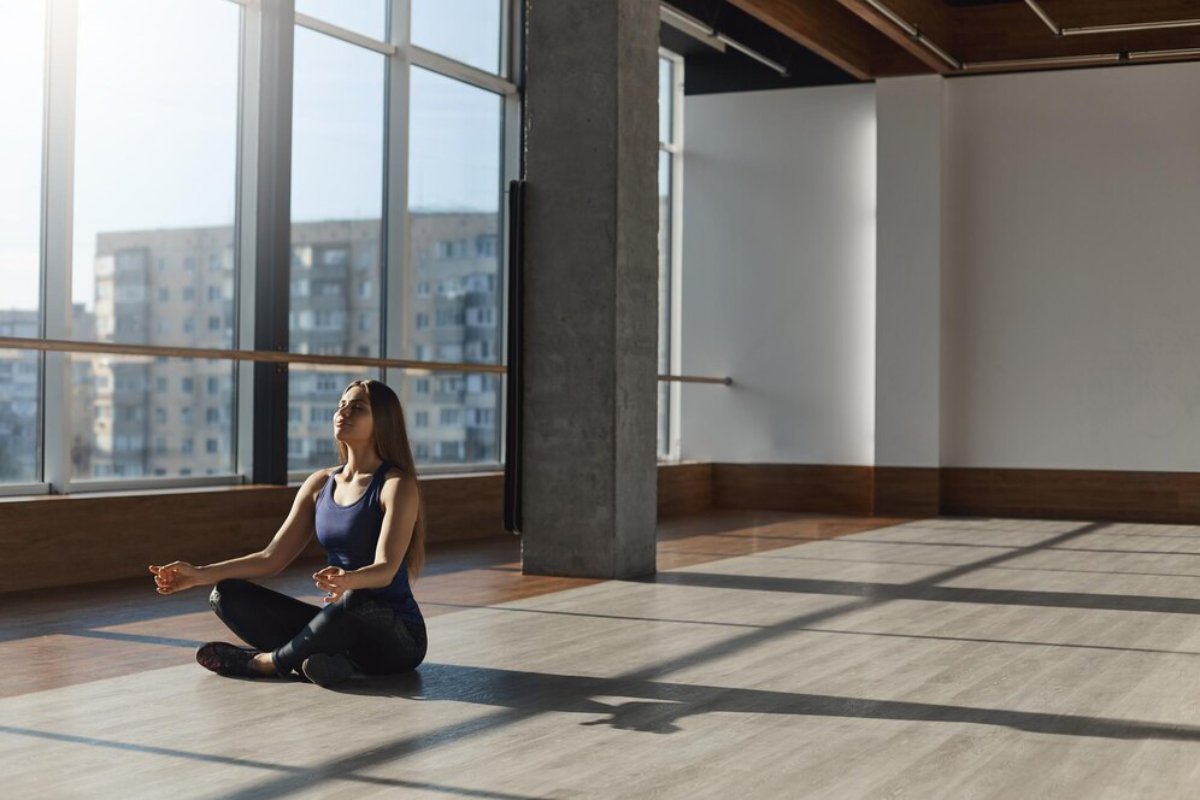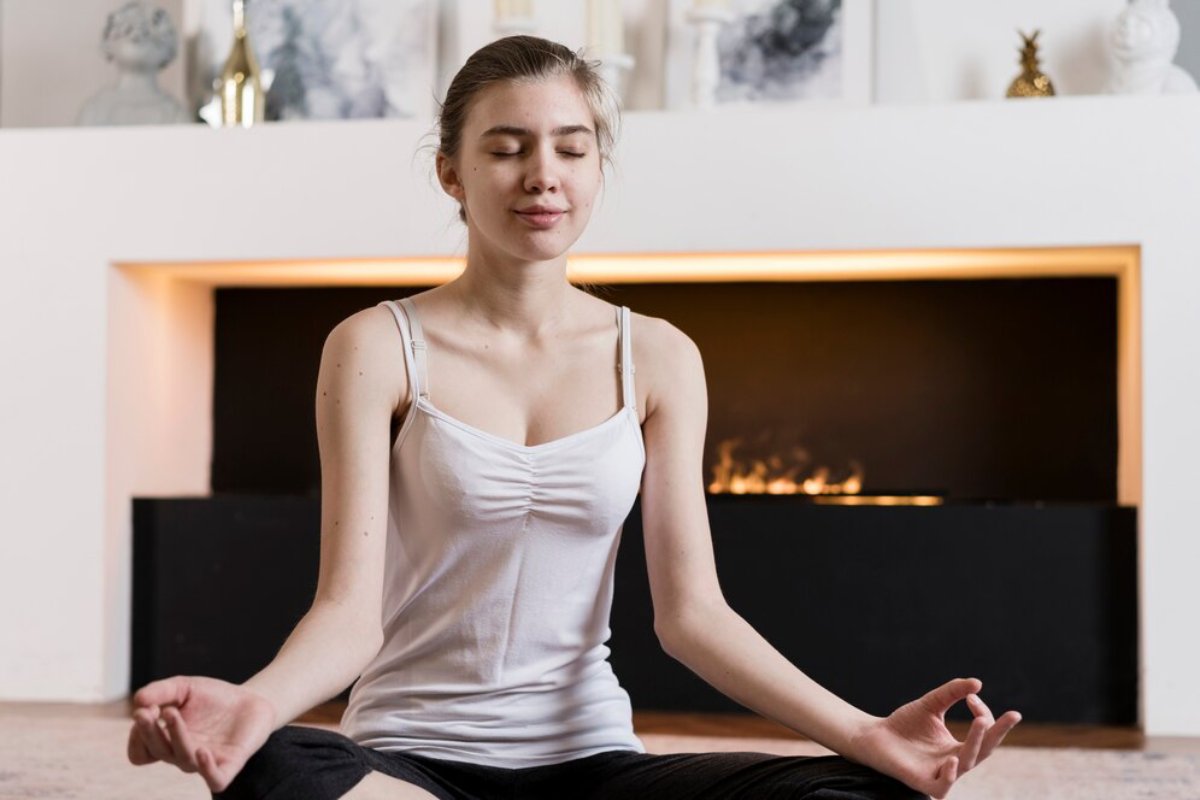The Yoga Blogs

Breathing Exercises to Regulate Emotions
Have you noticed how your breath changes when you’re nervous or angry? It may become shallow or quick, or you might hold it without realising. This is your body’s way of signalling distress.
The good news is that emotions can change your breathing. You can also use your breath to improve your emotions.
Breathing exercises come from ancient yogic traditions and modern psychology. They are simple yet powerful tools for emotional regulation.
In this blog, we’ll look at how breathwork, such as pranayama, improves mental clarity and supports emotional balance. This guide helps you handle everyday stress or bigger problems. Breathe through it.
Why Breath Is the Gateway to Emotional Balance
Understanding the Breath-Emotion Link
Breathing is unique because it is both automatic and controllable. This makes it a direct line between your conscious and unconscious mind.
When you’re anxious, your breath speeds up. When calm, it slows down. By changing your breathing, you send signals to your brain that it’s safe to relax.
Harvard Health Publishing shows that slow, deep breathing activates the parasympathetic nervous system. This lowers cortisol (the stress hormone), slows your heart rate, and promotes calmness.
The Role of Pranayama in Yoga
In yogic philosophy, pranayama means controlling prana — or life force — through breath. Pranayama is different from passive breathing. It means controlling your breath on purpose. This practice helps cleanse, energise, and balance your body and mind.
Modern science supports this. A 2020 study in Complementary Therapies in Medicine discovered that pranayama can lessen anxiety. It also boosts mood and strengthens emotional resilience.
Creating the Right Environment for Breathwork
You don’t need much to start breathing exercises. Still, a nice atmosphere can make your experience better.
Here’s how to prepare:
- Choose a quiet space where you won’t be disturbed.
- Sit comfortably, either cross-legged on a cushion or in a chair with your feet on the ground.
- Keep your spine straight for full lung expansion.
- Close your eyes, if comfortable, to focus inward.
- Set an intention — it can be as simple as “I want to feel calmer.”
Consistency matters more than duration. Even five minutes of focused breathwork can change your emotional state.
Top 6 Breathing Exercises for Emotional Regulation
These exercises are simple and effective. Whether you’re feeling anxious, overwhelmed, or drained, there’s a technique for you.

1. Box Breathing (Square Breathing)
Athletes and the military use this technique to stay calm under pressure.
How to do it:
- Inhale through your nose for 4 counts.
- Hold your breath for 4 counts.
- Exhale through your mouth for 4 counts.
- Hold again for 4 counts.
- Repeat for 4–6 rounds. Best for: Anxiety, panic, overwhelm.
- Why it works: The steady rhythm helps you focus, calms racing thoughts, and steadies your nervous system.
2. Alternate Nostril Breathing (Nadi Shodhana)
This balancing breath practice calms the mind and harmonises brain activity.
How to do it:
- Use your right thumb to close your right nostril.
- Inhale through the left nostril.
- Close the left nostril with your ring finger.
- Exhale through the right nostril.
- Inhale through the right, close it, and exhale through the left.
- That’s one round. Repeat for 5–10 rounds.
- Best for: Emotional turmoil, indecision, scattered thoughts.
- Why it works: It balances the brain’s left and right sides. This brings clarity and emotional stability.
3. Extended Exhalation Breathing
Lengthening the exhale activates the parasympathetic response, key to feeling calm.
How to do it:
- Inhale gently for 4 counts.
- Exhale slowly for 6–8 counts.
- Continue for 3–5 minutes. Best for: Tension, anger, irritability. Why it works: The long exhale tells your brain it’s time to relax, reducing stress signals in your body. Tip: Imagine breathing out through a straw to slow your exhale.
4. Ocean Breath (Ujjayi Pranayama)
This “victorious breath” creates a soft sound in the throat, mimicking ocean waves.
How to do it:
- Inhale through your nose while slightly constricting your throat.
- Exhale through your nose with the same constriction, creating a gentle “haaa” sound.
- Keep your breath smooth and steady. Best for: Foggy mind, emotional heaviness, low energy.
Why it works: The sound and rhythm draw your focus inward and help regulate both breath and emotions.
5. Humming Bee Breath (Bhramari)
This soothing practice calms the mind and soothes the nervous system.
How to do it:
- Inhale deeply through your nose.
- As you exhale, make a gentle humming sound (like a bee).
- Focus on the vibration in your head and chest.
- Repeat for 5 rounds. Best for: Anxiety, frustration, insomnia.
- Why it works: The vibrations stimulate the vagus nerve. This nerve is important for regulating emotions.

6. Three-Part Breath (Dirga Pranayama)
This full-body breath brings awareness to your respiratory system and deepens emotional presence.
How to do it:
- Inhale into your belly, then ribs, then chest.
- Exhale from chest, ribs, then belly — in reverse.
- Visualise your breath as a wave rising and falling.
- Repeat for 5–7 minutes.
Best for: Grounding, emotional awareness, calming overthinking.
Why it works: This technique strengthens the connection between mind and body. It also boosts awareness of the present moment.
Integrating Breathwork Into Daily Life
You don’t need to sit on a mat for 20 minutes to benefit. You can weave breathwork into your daily routine in simple ways.
Try these tips:
- Morning clarity: Begin your day with 3 minutes of Ujjayi or Three-Part Breath. This helps centre your thoughts.
- Pre-meeting nerves: Do 2 rounds of Box Breathing before a high-stakes situation.
- Midday overwhelm: Pause and try Extended Exhalation for 5 breaths to recalibrate.
- Evening wind-down: Use Alternate Nostril or Bhramari before bed to release mental tension.
The beauty of breathwork is its portability — no equipment or apps required. Just you and your breath.
A Personal Note: My Breath, My Anchor
A few years ago, I faced an emotional wall. Work stress, relationship issues, and the feeling of “not enough” made me feel like I was falling apart. Meditation felt too abstract, and exercise seemed too hard. But breath? That I could do.
I began with just two minutes of Alternate Nostril Breathing each morning. Then I added Ujjayi before meetings and Box Breathing when I felt overwhelmed.
It didn’t change my circumstances right away. But it changed me. It created space between emotion and reaction. It helped me respond instead of react. Slowly, it became my lifeline — a way to return to myself, even on tough days.
The Science Supports What Yogis Have Always Known
Research now backs up what yogic traditions have long said: breath is a key tool for managing emotions.
- A 2021 study in the Journal of Clinical Psychology found that breath techniques helped people react less emotionally. They also boosted psychological flexibility.
- Neuroscientists found that conscious breathing activates the prefrontal cortex. This area controls rational thought and decision-making.
- The Harvard Gazette said that breathwork boosts heart rate variability. This is an important sign of emotional resilience.
In short, your breath isn’t just air — it’s information, and you can use it to influence your inner world.
Breathe Into Balance
We often overlook the power of something so simple and accessible. But your breath is more than a survival tool — it’s a path for transformation.
Breathing exercises can help with anxiety, anger, sadness, or finding clarity. They provide a safe, effective, and proven method to move forward. They don’t just help you cope — they empower you to regulate, choose, pause, and begin anew.
So, why wait? Take a moment right now — yes, this very moment — to close your eyes and take a slow, mindful breath. Notice how it feels. Then do it again.
Ready to dive deeper into the practice? Share your experience or favourite technique in the comments. Pass this guide to someone who needs a breath of fresh air. And subscribe for more heart-centred, science-backed wellness tools.
Because emotional balance isn’t just a goal — it’s something you can practice, one breath at a time.









